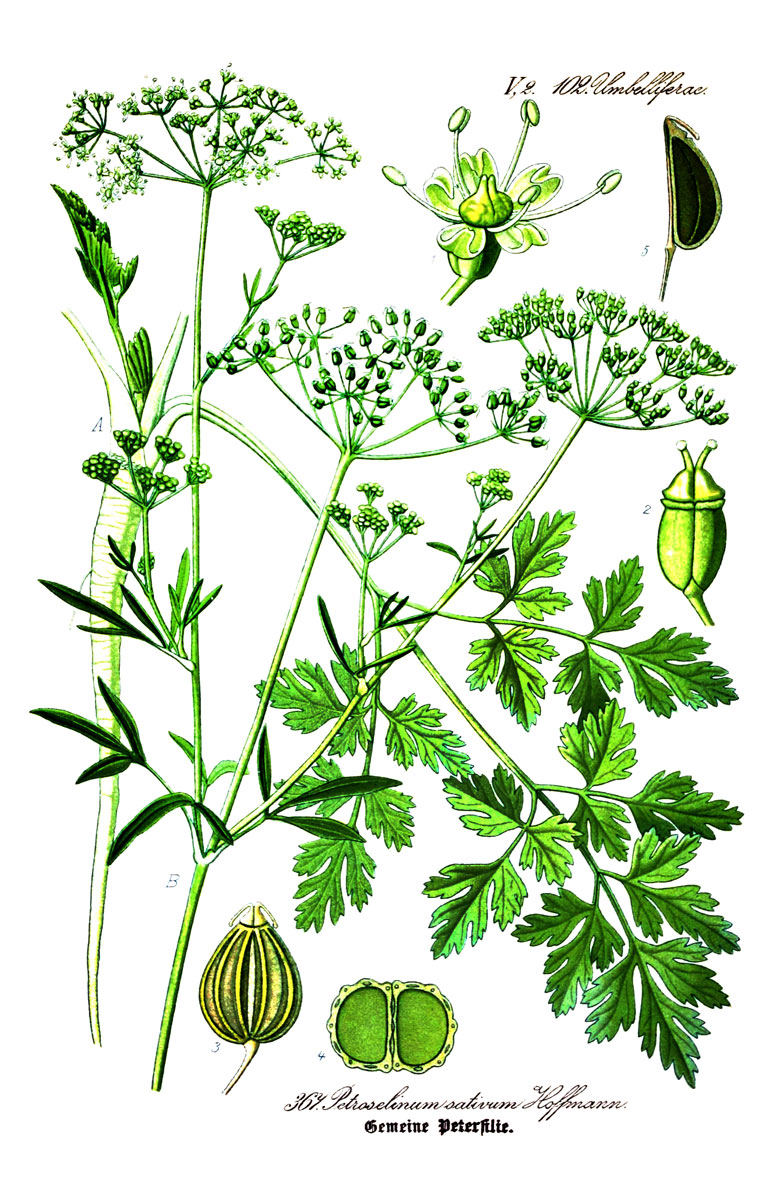Parsley

Origin: Central/Eastern Mediterranean
Family: Apiaceae
Scientific Name: Petroselinum crispum
Folk Names: Devil’s oatmeal, garden parsley, parsil, percely, persel, persely, persil, petersilie, petersylinge, petroselinum, rock parsley
Magical
Element: Air
Day: Wednesday
Planet: Mercury
Zodiac: Gemini
Associated Celebrations: Shadowfest
Deities: Aphrodite, Persephone, Venus
Parts used: Leaves
Magical Properties: Lust, protection, prosperity, purification
Substitutions: Mint
Lore
Parsley and celery are not always distinguishable in older texts, with the same names often being applied to both, from Ancient Greece through to at least the 17th century.
- In the Pyrenees, parsley was boiled in holy water to cure bewitchment.
- In Moravia, cows were fed parsley between St John’s Day (24th June) and the 26th to protect them from bewitchment.
- In Galacia (Spain), a bride would carry bread and parsley under her arm to the church to protect her from evil spirits.
- There are lots of beliefs associating parsley with death omens, collected from all around Europe, as well as USA.
Aromatherapy
Part Used: Seeds or leaves
Extraction Method: Steam distillation
Flash Point: 48°C
Scent Type: Herbaceous
Perfume Note: Middle
Scent Description: Woody-spicy, herbaceous scent
Warnings:
- Avoid during pregnancy.
- May cause skin irritation and sensitisation, dilute double for topical application.
- Phototoxic: Do not expose skin to sunlight for 12-72 hours after topical use.
Botanical
Type: Herb
Plant Height: 1m-35m
Leaves: Bright green, 10-25cm tripinnate leaves, with 1-3cm leaflets, either flat or curly
Flowers: Flowering spike with umbels of yellow-green flowers
Fruit: Ovate, 2-3mm long
Etymology: From the Ancient Greek petroselinon for “rock-celery” (petra = rock, selinon = celery).
In the Garden
Type: Biennial
Sow: Spring
Light: Full to partial sun
Water: Keep damp
Soil: Rich, well-drained
Tips:
- Plant seeds in final position, as parsley dislikes being transplanted.
